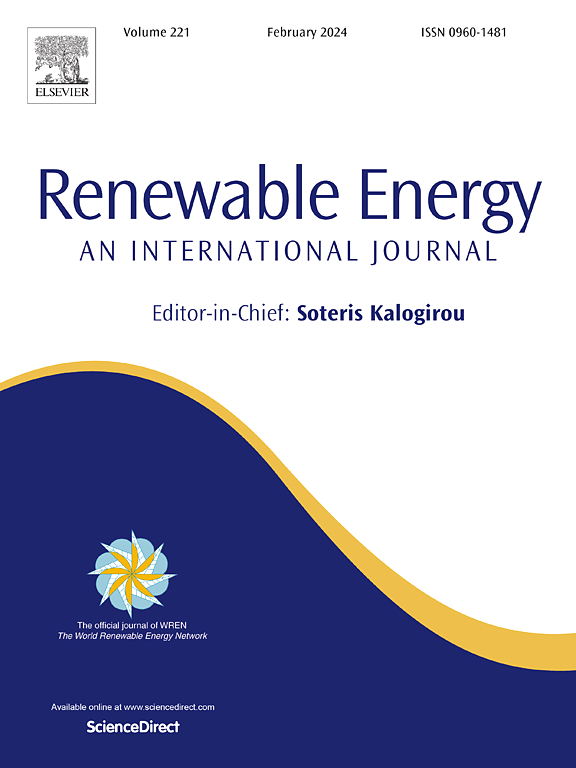How does carbon emission efficiency vary in Chinese cities?- taking 108 cities along the Yangtze river economic belt as an example
IF 9.1
1区 工程技术
Q1 ENERGY & FUELS
引用次数: 0
Abstract
Improving carbon emission efficiency (CEE) is an important way to achieve carbon peaking by 2030 and carbon neutrality by 2060. Existing literature mainly focuses on CEE research at the provincial level and lacks in-depth research at the city level. In this paper, 108 cities in the Yangtze River Economic Belt (YREB) are selected as research objects, and we conduct a more in-depth study on the spatial and temporal evolution of CEE and its influencing factors through gravitational modeling, trend surface analysis and spatial econometric modeling. The study found that: (1) the overall change of CEE in YREB is volatile, with the distribution of downstream > midstream > upstream, and the overall trend of dispersion and multi-centered distribution. (2) The CEE of YREB has obvious spatial variability, with fewer cities with high CEE, mainly concentrated in the downstream, such as Shanghai, Suzhou, Wenzhou and Shaoxing, etc., while cities with low CEE are mainly concentrated in the upstream and the middle reaches, such as Pu'er, Liupanshui, Panzhihua and Ganzhou. (3) The CEE of YREB is characterized by spatial correlation, and the whole spatial correlation network is a connected whole, but the spatial interactions have gradually weakened since 2020, and the agglomeration in the downstream area is more stable. (4) The influencing factors are all significant to the CEE, among which the level of economic development, foreign trade and technological innovation have a positive influence on the CEE of YREB, and the level of urbanization, government intervention, industrial structure and population have a negative influence on the CEE of YREB. The findings of this paper provide useful policy insights for accelerating the construction of ecological civilization.
中国城市的碳排放效率是如何变化的?——以长江经济带108个城市为例
提高碳排放效率(CEE)是到2030年实现碳峰值和到2060年实现碳中和的重要途径。现有文献主要集中在省级层面的研究,缺乏对城市层面的深入研究。本文以长江经济带108个城市为研究对象,通过引力模型、趋势面分析和空间计量模型,对长江经济带的时空演变及其影响因素进行了较为深入的研究。研究发现:(1)长江经济带CEE整体变化具有波动性,呈下游分布;中游的在上游,总体呈分散和多中心分布的趋势。②长江经济带的CEE空间变异性明显,CEE高的城市较少,主要集中在下游,如上海、苏州、温州和绍兴等,而CEE低的城市主要集中在上游和中游,如普洱、六盘水、攀枝花和赣州等。③长江经济带CEE具有空间关联性特征,整体空间关联性网络是一个相互联系的整体,但2020年以来空间相互作用逐渐减弱,下游区域集聚更加稳定。(4)影响因素对中东欧均显著,其中经济发展水平、对外贸易水平和技术创新水平对“一带一路”地区的中东欧具有正向影响,城镇化水平、政府干预水平、产业结构和人口水平对“一带一路”地区的中东欧具有负向影响。本文的研究结果为加快生态文明建设提供了有益的政策启示。
本文章由计算机程序翻译,如有差异,请以英文原文为准。
求助全文
约1分钟内获得全文
求助全文
来源期刊

Renewable Energy
工程技术-能源与燃料
CiteScore
18.40
自引率
9.20%
发文量
1955
审稿时长
6.6 months
期刊介绍:
Renewable Energy journal is dedicated to advancing knowledge and disseminating insights on various topics and technologies within renewable energy systems and components. Our mission is to support researchers, engineers, economists, manufacturers, NGOs, associations, and societies in staying updated on new developments in their respective fields and applying alternative energy solutions to current practices.
As an international, multidisciplinary journal in renewable energy engineering and research, we strive to be a premier peer-reviewed platform and a trusted source of original research and reviews in the field of renewable energy. Join us in our endeavor to drive innovation and progress in sustainable energy solutions.
 求助内容:
求助内容: 应助结果提醒方式:
应助结果提醒方式:


